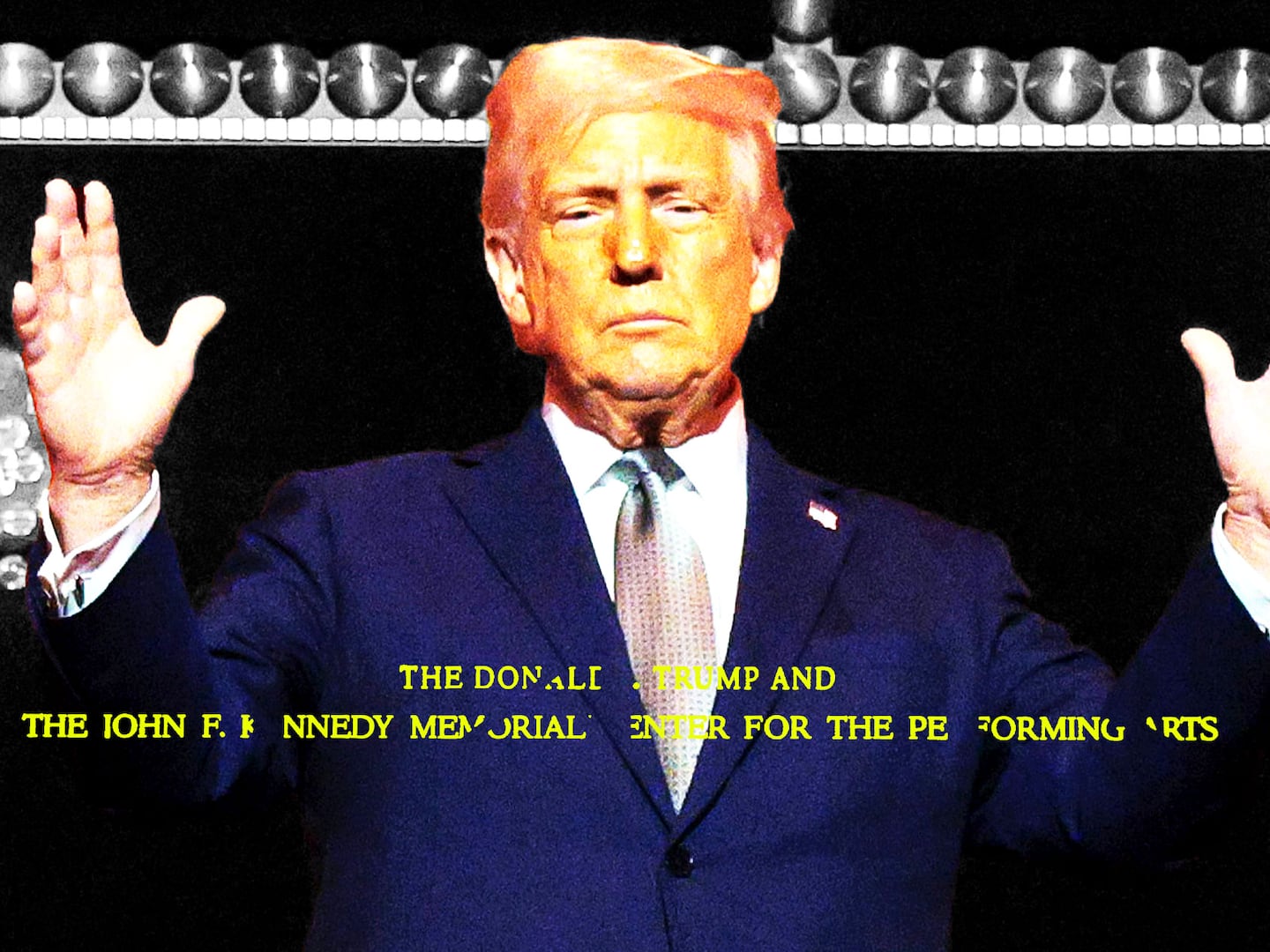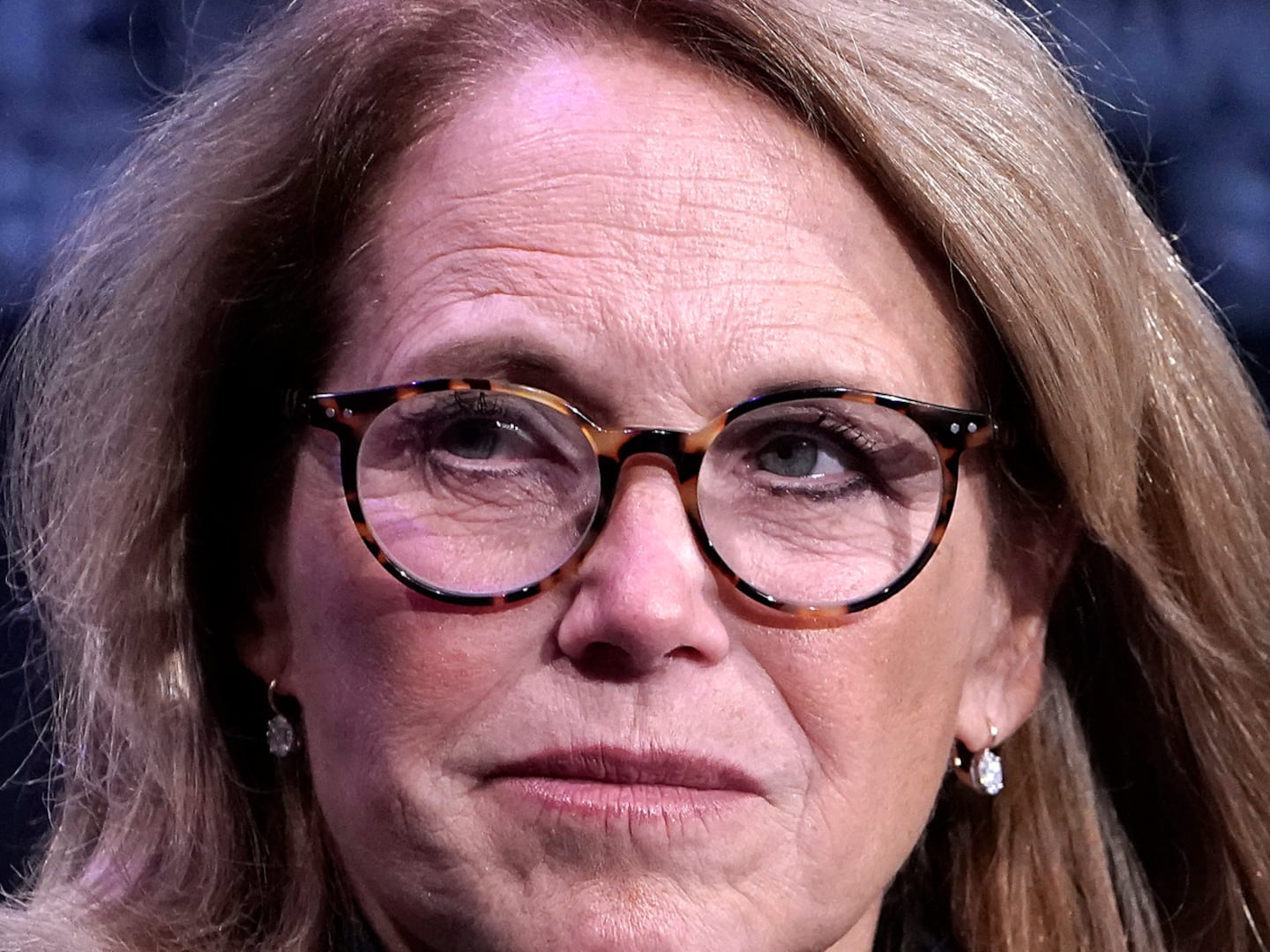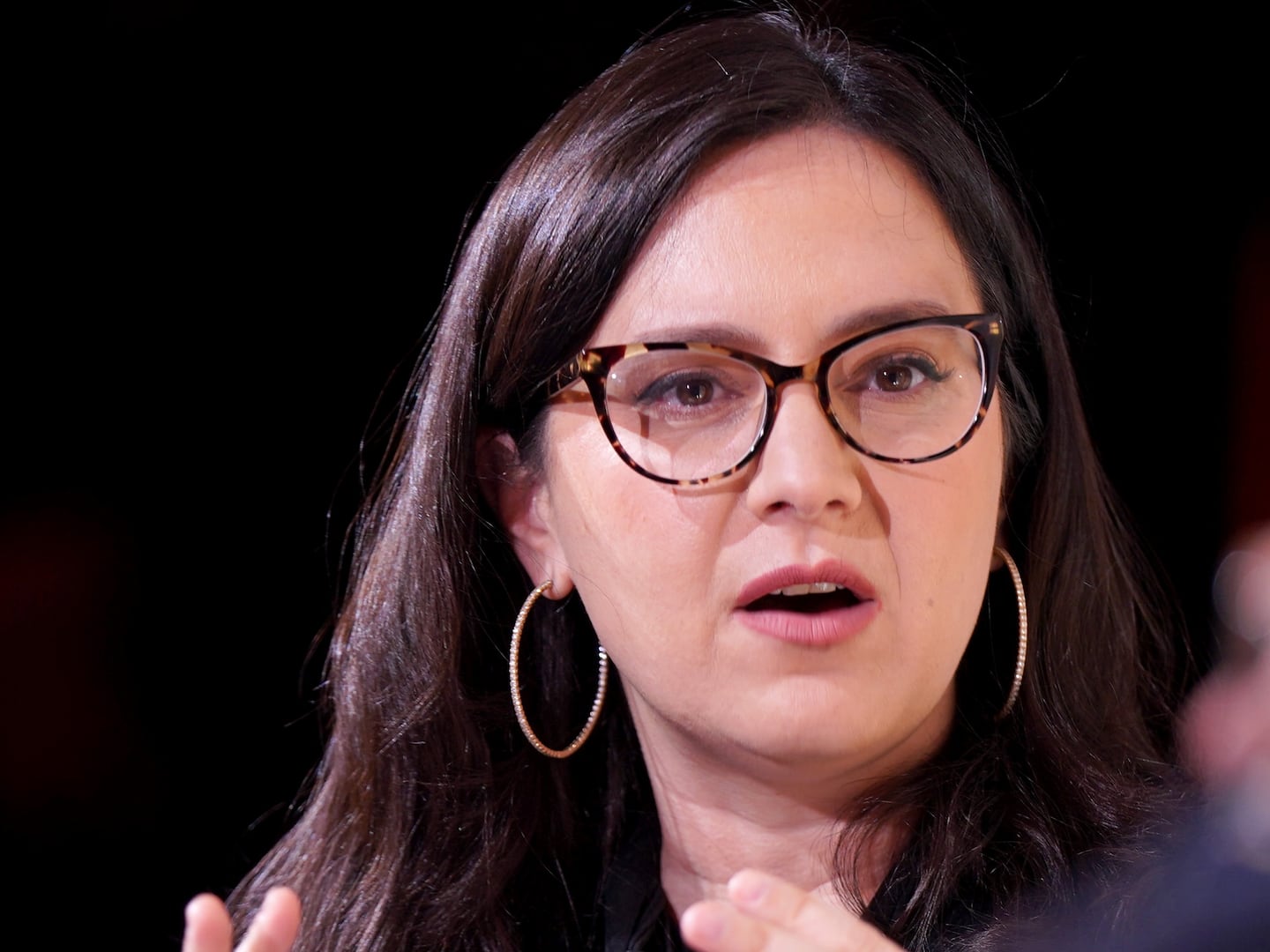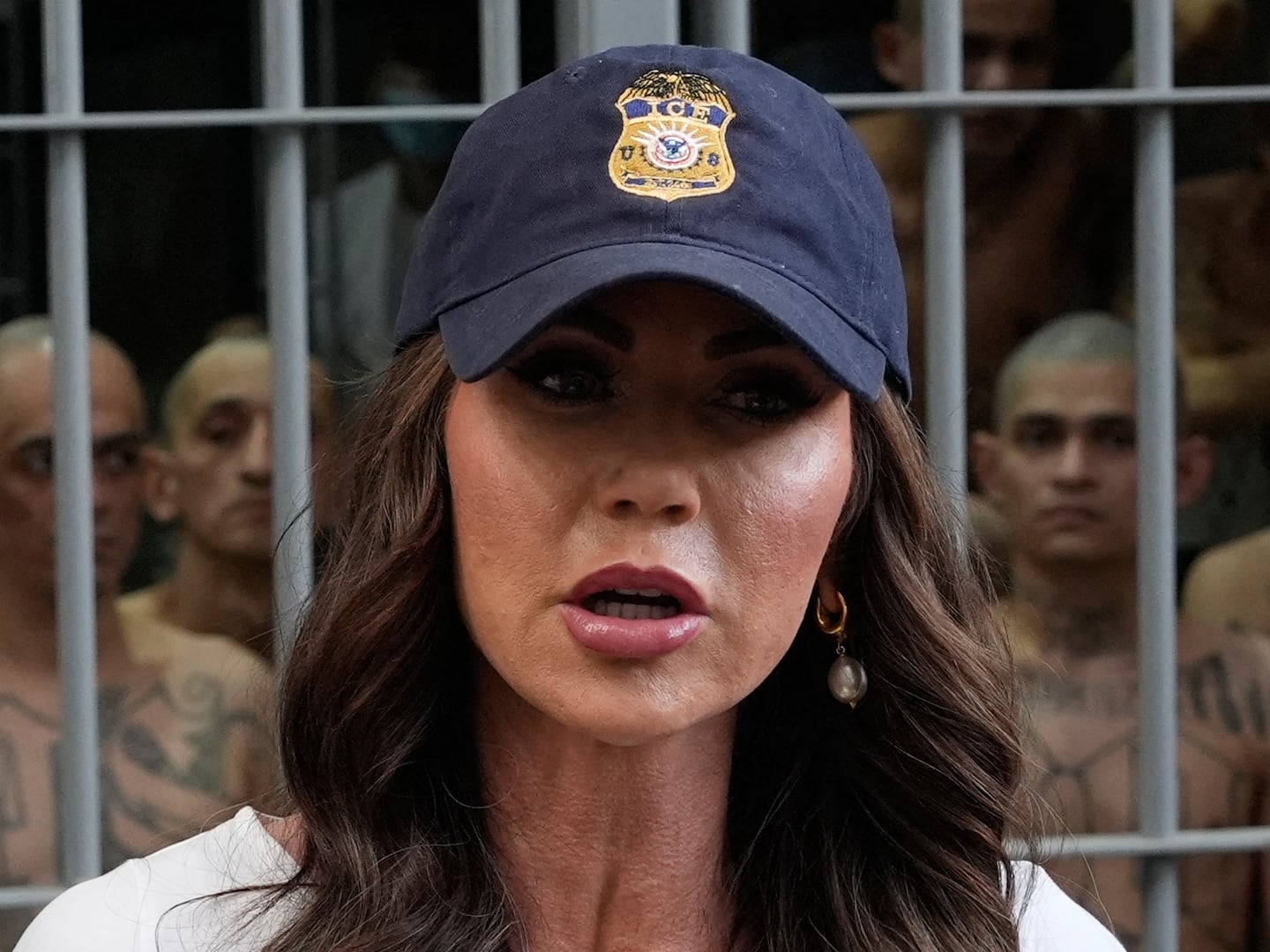In Jem and the Holograms, a talented young musician gets discovered on the Internet, goes viral, gains a zealous fan base, and draws the attention of a predatory record exec eager to commodify, repackage, and resell that lightning in a bottle. It happens in the span of a month and with the help of Twitter, Instagram, and a ravenous tech-addled culture that’s made celebrities out of far less (cute animals, epic fails).
If that narrative sounds more Justin Bieber than Jerrica Benton, more YouTube fantasy than glamour and glitter, fashion and fame—that’s no accident. Rebooted as a live-action drama, starring actors born long after Hasbro discontinued the glam-rock toy line that started it all, 2015’s Jem and the Holograms is a rags-to-riches musical mostly for young millennials, not their mothers.
Played by Aubrey Peeples, Jem—or rather, Jerrica—is a teenage girl who doesn’t quite know how to feel like herself. She’s a heroine who must navigate the seductive pitfalls of fame without completely alienating the loved ones who got her there. A naïf who sits alone in her room, quietly crooning into her webcam hiding behind costume wigs and makeup, afraid to unleash her inner rock star. It’s not at all the Jem you remember. And it wouldn’t have existed if not for a scary movie mogul and a few key Beliebers.
Thirty years after the beloved cartoon hit the airwaves and became an instant symbol of totally ’80s girl power, the Jem and the Holograms movie is the product of four men: director Jon M. Chu, best known for reviving the Step Up franchise and directing G.I. Joe 2; writer Ryan Landels, who came up through Chu’s dance-centric Web series The LXD; Scooter Braun, the music manager-Svengali who discovered Bieber off of YouTube; and Jason Blum, the Hollywood alchemist who built his name on micro-budget horror hits like Paranormal Activity, Insidious, and The Purge.
“Well, it’s not really made by four dudes,” smiled Chu as we talked Jem in Los Angeles, where the long-gestating film is set and was shot in locales like Hollywood and the Santa Monica Pier. “It was made by a lot of people. And I think that Jem is bigger than just a story about a female. I think it’s about family and it’s about your identity and who you are, and that’s what we strived to do.”
To his credit, Chu’s maintained a cheery sense of optimism through a tough pre-release period during which the makers of the Universal Pictures reboot were soundly excoriated by truly, truly, truly outraged hardcore Jem fans (including, oddly enough, William Shatner). The first trailer alone invited scrutiny and scorn when it seemed as though the filmmakers had scrubbed Jem and the Holograms of everything that made it Jem and the Holograms.
After original series writer Christy Marx aired her grievances with the reboot on Facebook, Chu reached out. He acknowledged what he was doing to update Jem for a new audience while trying to maintain the spirit of the animated series.
“Female empowerment and just the empowerment in general of a girl becoming this sort of princess, dealing with identity and fighting bullies, all those things to me are more relevant than ever,” he said. “I wanted her to understand these are the things I was going for. I hadn’t figured it all out at that point. Her advice to me was that one of the things she said she wished she’d done more in the cartoons was focus on the sisterhood. So we took that to heart. We focused it more on their support of one another.” Marx came onboard to film a cameo, as did original voice actress Samantha Newark and Britta Phillips, her singing voice.
Additional trailers revealed more throwbacks and nods to the original, albeit completely reimagined for its 2015 setting. This Jerrica is a sensitive orphan singer-songwriter who reluctantly makes music with her “sisters”—biological sis Kimber (Stefanie Scott) and their BFFs Aja (Hayley Kiyoko) and Shana (Aurora Perrineau), Snapchat-gen teens who were adopted by Jerrica’s kooky Aunt Bailey (Molly Ringwald).
The Holograms of 2015 don retro costumes instead of literal holograms to rock out, and sing poppy anthems about sisterhood and believing in oneself. Synergy isn’t a Madonna-as-aerobics instructor futuristic fairy godmother but a BB-8-like robot that Jerrica’s inventor dad created to issue cryptic clues that send her on a quest across Los Angeles.
“I knew we were going to get backlash the moment we weren’t doing it in the ’80s,” said Braun, who remembers voicing his concerns after Chu brought him on to handle the musical component. Then again, Braun also recalled, he almost didn’t hire Chu to direct the 2011 pop doc Never Say Never for his biggest client, because he thought he was just a “dance guy.”
One phone call with Chu changed Braun’s mind. The film, shot in 3D with an inspired use of YouTube-sourced fan home videos and snippets of the pop star’s life, took in $99 million, the highest-grossing music documentary in decades. Chu and Braun reteamed for the more hagiographic sequel two years later to document Bieber’s 2013 Believe tour, but by then the Bieber bubble had already started to burst, and the film grossed just $10 million.
Eleven years earlier—before he made his feature directing debut with Step Up 2 The Streets—Chu had tried to make a Jem and the Holograms movie, inspired by a childhood love cultivated while watching the cartoons with his older sisters. He managed to get Hasbro on board for a Japan-set story that “was more about Jem—about this spectacle that was Jem and these crazy holograms… It was very much like the cartoon.” But the pitch was too pricey for Universal. Chu lived with the ghost of his unrealized Jem project as he went on to direct other projects.
By the time Jem came back into his life, so had two additional key elements: Bieber, whose YouTube-aided rise to fame brought with it personal pitfalls to match, and Blum, who was ready to apply his astoundingly lucrative low-budget model to movies outside the horror genre.
“When I was with Justin, I saw the real effects of fame and attention on a young person,” Chu said. “I saw the effects of playing different roles on social media, in front of the camera, on the stage, and behind the scenes. As a son, as a friend, as a client—all those different faces that he has to play. It hurt me, because I saw how difficult that was for any person to be going through.”
“For a 16-year-old kid at the time, trying to deal with that while at the same time trying to take responsibility for your own life… I could see the conflict in his brain. I’m amazed that he could stay as together as he has. It makes me so proud to know him and to have seen him go through it, and in this story there are definitely elements of the pressure of that.”

In a way, his Jem tells the fairy tale version of The Bieber Story. “I think it’s way more complicated than even this movie can touch on. But I wanted to show how ultimately it came down to the people who were directly next to him, and to her. Those people are the ones who can save you. Those people are the ones who will be there through the ups and downs.”
Blum, meanwhile, had proven his microbudget model several times over with his patented formula: Budgets kept at or under $5 million, shot mostly in L.A. to keep production contained, usually in a single location. He’d met Chu years earlier. When they reconnected, both had already struck relationships with Hasbro through the company’s Ouija and G.I. Joe properties.
Blum admits he wasn’t as familiar with Jem as Chu was. In fact, “I didn’t know what Jem and the Holograms was,” he laughed, relaxing on a couch in a suite inside Hollywood’s Redbury Hotel. “He talked to me about it and I started to learn about it, and thought it was really cool. His passion for it was really infectious.”
“There’s a lot of crossover between people who like Jem and people who like horror,” said Blum. “A lot. It’s a celebration of being weird. They’re both the same. As a horror fan, and a Jem and the Holograms fan, and someone who is also very weird, I understand.”
The idea of doing Jem as a low-budget Blumhouse production fit into Blum’s desire to branch out while keeping the core of his business in genre, the kind of experiment that brought Blum an unexpected Oscar nomination with last year’s Whiplash.
“Everyone asks me, ‘Do you want to make your business bigger? Do you want to do bigger-budget movies?’” he said. “I’m not very interested in making bigger-budget movies, but I am interested in seeing if our low-budget system that we have can work in other genres.”
It helped that Chu & Co. delivered the Jem script “on spec, without the underlying rights, which I thought was so cool,” Blum raved. “No one ever does it. No one ever has the guts to do that. It should happen more. I really believe in that, but it doesn’t happen enough.”
Now the self-described “King of Horror” listens to the songs of the Jem and the Holograms soundtrack on his phone: “They’re great! Listen to them!”
The iconic version of Jem—the only version, many fans will argue—is the Jem that lived for three seasons and 65 episodes between 1985-1988 before sashaying on in syndication. The stylish and confident rock star with electric pink hair and sparkly everything that exploded onstage as the alter ego of a sensible young woman named Jerrica whenever she called upon a benevolent goddess named Synergy via a pair of super-powered earrings.
But people often forget Jem was originally dreamed up by ad execs to sell toys to young girls, created by the same company that made G.I. Joe and Transformers into still-lucrative moneymakers. The makers of the Jem reboot lean into their multi-platform reality, one of the reasons Braun was brought in to find Jem’s new sound—and within the span of just two weeks.
Braun had a few aces up his sleeve. His staff spent a week searching for original material to fill out the film’s soundtrack. When they got stuck on a soulful number that Rio (Ryan Guzman), now the son of record exec Erica Raymond (Juliette Lewis), sings under a boardwalk with Jerrica and her bandmates, Braun’s crew dug into the archives and found the perfect ditty in an unused Justin Bieber song that didn’t make the cut of the Believe album.
Braun said he sees a lot of Jem in the female artists he represents. “Two of my other clients also experienced a similar thing, because I think women experience it differently than guys do. Justin was definitely off of YouTube, so there were comparisons [to Jem]. Hilary Duff saw it and said, ‘I relate to this completely, because I remember being that girl.’”
“Ariana Grande was the same way,” he continued. “The way Jerrica goes through it and it just happens so quickly, you don’t know if you want that many cameras on you. I’ve lived it because I’ve managed so many acts in that age range.”
“It’s very, very hard, as you see in Jem, to grow up in the spotlight,” said Braun, identifying the parallels between Jerrica’s story and his most famous client. After a troubled year of bad behavior, brushes with the law, a DUI arrest, and controversy over racist remarks recorded years earlier, the 21-year-old Bieber is now prepping for the November 13 release of his new album, titled Purpose.
“It takes a very strong person,” commented Braun. “And people make mistakes. But I think people are more defined by how they get up from a mistake than just living through success. I had the pleasure of meeting Jerry Weintraub before he passed away. I said, ‘Last year was a rough year,’ and he said, ‘No—it was a great year, because there’s a story now. Now you have somewhere to go.’”
Jem is only the start of a concerted push Braun is attempting to make to cross-pollinate his music business into film. “I think it’s inevitable,” he said. “I represent way too many acts and it would be stupid not to [combine the two].”
“For some of our clients it’s easier, like Ariana, who is an actress,” Braun said. Others are already working with acting coaches and thinking strategically. “I don’t want them to just walk in with a brand name. I want them to be able to do something that isn’t necessarily what people are expecting of them.”
He and Blum are already planning to reteam on a horror film starring one of his clients. “It’s top secret right now but we’re going to do a scary movie with a very famous musician, a singer,” teased Blum. And they’re already ready to make the Jem sequel. “In the next one, because [Jason Blum] is the King of Horror, we’re going to kill all of them,” Braun grinned.
Actually, Chu says, he did envision a multi-film arc for Jem and the Holograms. The film’s credits roll hints at that long-term game plan. Whereas the first movie acts as the origin story for the young Jerrica Benton—the Batman Begins of Jem, as Chu puts it—the sequel would see the Holograms face off against their iconic punk rock nemeses.
“The story is about Jerrica and her sisters, and bringing the Misfits in would shift the movie,” he said. “I wanted to keep it as the Almost Famous version of Jem and the Holograms, not to do what you would expect from a Jem and the Holograms movie. I love the Misfits, don’t get me wrong…”
Their songs are better, I pointed out.
“I will tell you this,” he grinned. “I knew we couldn’t tell everything in one movie. As much as I wanted the Misfits to be in it, it wouldn’t have served the Misfits… but just you wait.”






